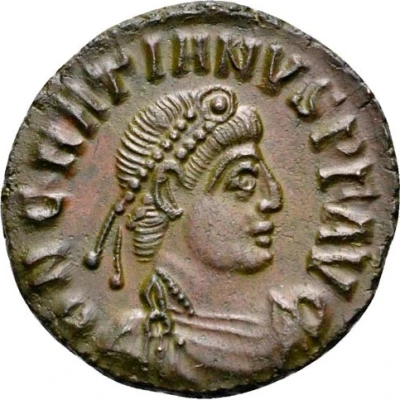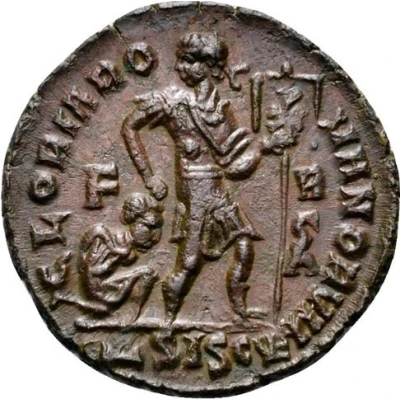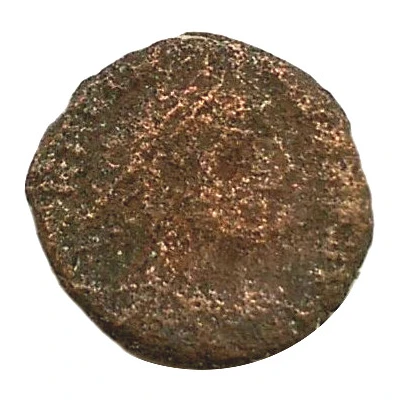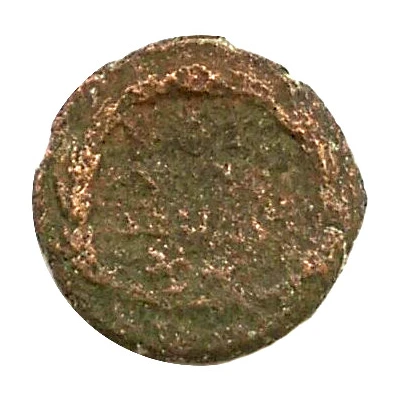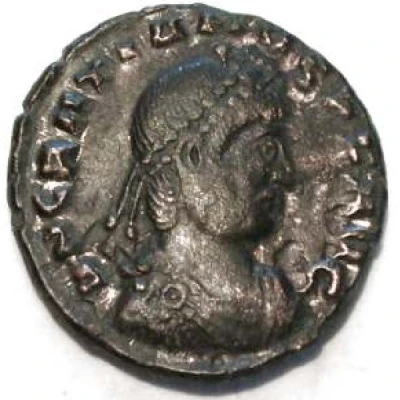
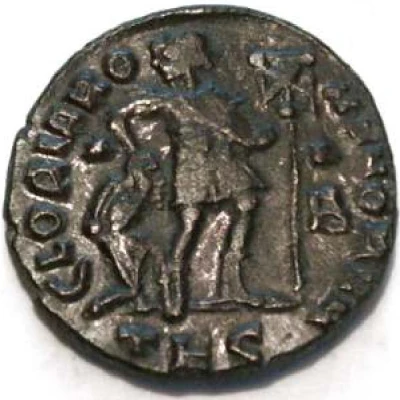

© American Numismatic Society (ANS)
Follis - Gratianus GLORIA ROMANORVM; Thessalonica
| Bronze | 2.7 g | 18 mm |
| Issuer | Rome › Roman Empire (27 BC - 395 AD) |
|---|---|
| Emperor | Gratian (367-383) |
| Type | Standard circulation coin |
| Years | 367-375 |
| Value | Follis (1⁄180) |
| Currency | Solidus, Reform of Constantine (AD 310/324 – 395) |
| Composition | Bronze |
| Weight | 2.7 g |
| Diameter | 18 mm |
| Thickness | 1 mm |
| Shape | Round (irregular) |
| Technique | Hammered |
| Orientation | Coin alignment ↑↓ |
| Demonetized | Yes |
| Updated | 2024-10-04 |
| Numista | N#77677 |
|---|---|
| Rarity index | 73% |
Reverse
Emperor advancing right, head left, holding labarum in left hand and with right hand dragging captive by the hair.
Symbols in fields.
Script: Latin
Lettering:
GLORIA ROMANORVM
⭑ | B
TES
Translation: Gloria Romanorum: "To the Glory of the Romans".
Interesting fact
One interesting fact about the Follis - Gratianus coin is that it features a unique reverse design that showcases the Roman Empire's shift towards Christianity. The coin's reverse side depicts a chi-rho monogram, which is a symbol of Christianity that was adopted by Emperor Constantine the Great. This suggests that the coin was issued during a time when Christianity was becoming increasingly influential in the Roman Empire, and that the emperor was actively promoting the new religion.
